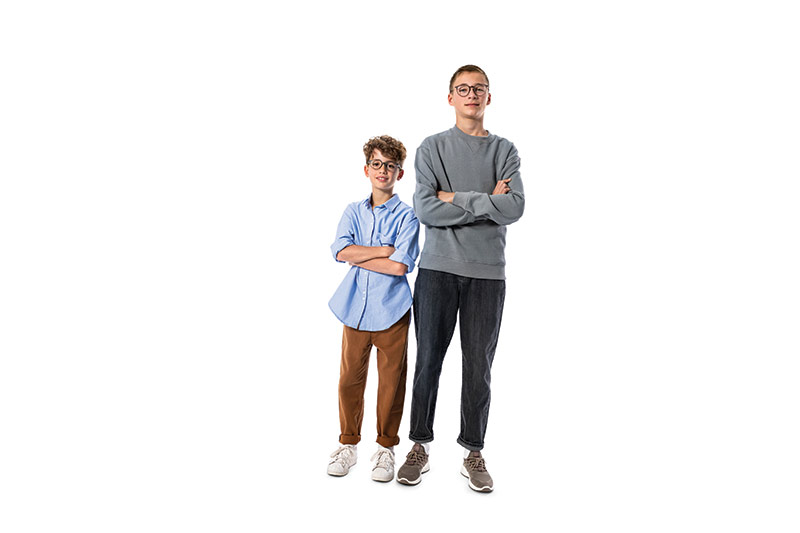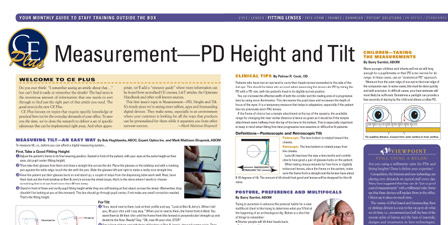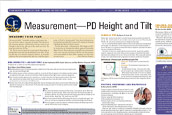
By Preston Fassel
It’s undeniable that we live in an age of digital natives—children who have only ever grown up in a world replete with technology. While the phrase has always seemed a little strange to me (it sounds like an alien species from one of the cheesier episodes of the original run of “Star Trek”), it describes a real phenomenon. A recent survey found that 60 percent of parents said their children had begun using smartphones before they turned five, speaking to a next generation that has almost literally had tech from the cradle. Even moving beyond that, 93 percent of adolescents ages 8 to 11 are online in some form almost 14 hours a week. By the time they reach ages 12 and up, 99 percent are online a staggering 20.5 hours a week. The result of this is a new challenge facing optometrists and opticians: the standard model of single-vision lenses used to correct myopia for over the last 100 years is no longer a viable option in such a digital age. Between smartphones, tablets and laptops—the latter two increasingly used in classroom environments—adolescents’ focal point changes on a constant basis, a point that changes as they age. Consider as a child grows, so too do the length of their arms, directly impacting the distance from a digital device to their faces. Further complicating matters is that in contrast to the “kids these days” stereotype of a generation that spends much of its time online, digital natives have rediscovered the outdoors: Two surveys found that the average adolescent spends two hours engaging in outdoor recreational activities daily, or about 11 hours per week.
What is the solution, then? For growing patients undergoing constant physical change needing lenses that correct for multiple focal points, what is an optician to do?
One solution is ZEISS SmartLife Young Lenses, technology specifically designed for our enterprising young digital natives on the go. Think of it as something akin to a PAL optimized not for older presbyopes, but younger myopes. The object space model minimizes oblique astigmatism when wearers look down to view a close handheld device and when they look up to see more distant objects. The design optimization makes the change as smooth and imperceptible as possible. Using 3D modeling, each lens is custom designed for the adolescent patient according to age-based parameters, changing the value of the viewing distance. Further, SmartLife Young lenses account for a variety of other factors not normally considered for the physical habits of digital natives, such as pupil size. A study conducted to investigate the effects of digital technology on the eye found that light emitted from a screen can reduce pupil size by 20 percent versus reading print media. ZEISS’ Luminance Design 2.0 technology considers the wearer’s pupil size based on both age and exposure to digital light in order to provide the best performance possible. Speaking of light, ZEISS SmartLife Young Single Vision lenses also provide up to 400 nm complete UV protection for the eyes and surrounding skin and are available with ZEISS PhotoFusion X photochromic lenses for maximum protection and comfort in any environment.
Rather than just accounting for changes brought about by digital technology, ZEISS has also begun to consider factors that have always been an issue but rarely taken into account when dispensing lenses to adolescent patients: namely, the ever-changing landscape of the face as adolescents age and pass through the dreaded valley of puberty. Noses grow, heads enlarge, the space between eyes widens, and the eyes themselves grow larger, all factors that impact visual acuity in conjunction with digital tech use as children age. SmartLife Young lenses take this into account. A child’s age-related anatomical requirements, such as the position of wear, frame parameters and lens design parameters, optimized for the best visual performance or the young wearer’s daily activities. ZEISS SmartLife Young Single Vision lenses provide up to a 60 percent wider field of vision compared to conventional ZEISS single-vision lenses. It is in a way a reinvention of the wheel: a completely new model of lens technology designed for a world far removed from the one that birthed the first single vision lenses.
We can learn quite a bit from digital natives, not only in how they have organically incorporated technology into their lives from a young age, but also how that incorporation informs a brave new world of optical engineering. In a future in which one size no longer fits all when it comes to adolescent myopia correction, ZEISS SmartLife Young Single Vision Lenses provide a way forward for ECPs to provide the best possible care for the leaders of tomorrow.












